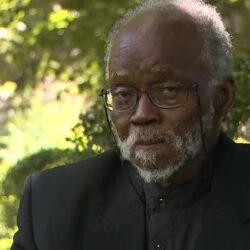Opening the Door to Allow All Truly Gifted Students Entry
The greatest value of research is the positive impact it has on society. Academically driven insights and discoveries influence and inform policy, practice and public life. This is the first in a series of blog posts looking at seminal academic articles from a collection — SAGE Inspire — curated by SAGE Publishing’s journal editors, who based their nominations on the content’s real-world impact.
An assessment of the real-world impact of …
The Role of Nonverbal Ability Tests in Identifying Academically Gifted Students: An Aptitude Perspective
by David F. Lohman
The first goal of this article is to discuss the role of nonverbal ability tests in the identification of academically gifted children, many of which exclude the majority of the most academically accomplished students in all ethnic groups. The second goal is to propose a better method for identifying gifted students.
Gifted Child Quarterly, vol. 49, 2: pp. 111-138. , First Published Apr 1, 2005.
One of the most important and enduring problems in gifted education is the underrepresentation of groups of students, including racial and ethnic minorities, in programs serving the gifted and talented. Unfortunately, another enduring problem in our field is the prevalence of myths and wishful thinking in practice despite the empirical evidence.
David Lohman’s seminal work in Gifted Child Quarterly, “The role of nonverbal ability tests in identifying academically gifted students: An aptitude perspective,” addresses the issue of underrepresentation while tackling a well-intentioned myth that nonverbal tests, specifically figural matrices, are the most equitable way to assess students who come from racial, ethnic, or linguistic minorities in the U.S. Many researchers, and even more educators, fervently want to believe that the answer to underrepresentation lies in a test that can peer through the unequal opportunities offered by our society and recognize innate talent in students. This has led to a widespread belief that nonverbal tests (often based on a single test item format) will provide the greatest equity in gifted and talented identification and eliminate group differences in test performance while still identifying the most talented students.

In this paper, Lohman offers a cogent analysis of nonverbal testing informed by his deep expertise in cognitive psychology, educational psychology, and the history of intelligence testing. His readers will also recognize his way with metaphors to explain theoretical issues. He bolsters this expertise with empirical evidence that supports his central claims that nonverbal tests can have a role in ability testing for gifted education placement, but that, alone, they are a poor substitute for a comprehensive ability battery and have limited value for planning instruction.
Further, he showed that using nonverbal tests can actually hinder efforts to identify gifted and talented students that come from under-represented backgrounds. In his data, he showed that profiles of ability–comparing relative performance on verbal, quantitative, and nonverbal batteries–indicate that African American students were much more likely than any other group of students to have a relative nonverbal weakness! His conclusion would probably shock anyone not familiar with this paper:
“This means that screening students with a nonverbal reasoning test will actually eliminate many of the most academically capable Black students in the sample.”
(p.122)
But Lohman does not leave us without hope of improving the identification of gifted and talented students who come from racial, ethnic, or linguistic minorities. Instead, he suggests that the problem lies not in the tests but in how we interpret scores. This is a theme he returned to repeatedly until his recent retirement from the field: ability test scores can only be meaningfully interpreted when the students being compared (via test norms) have had similar opportunities to learn in the symbol system used for testing (words, numbers, figures). Only approaches that take into account disparate opportunities, such as local or sub-group norms, can hope to level the playing field.
Because it was recognized as one of the most important contributions in the field of gifted education, this article was awarded the 2010 Gifted Child Quarterly Research Paper of the Decade in addition to the 2005 Paper of the Year award. We still have a long way to go to create equitable access to high-quality education, including gifted and talented services. The disparities in our U.S. educational system will always be reflected in our assessment instruments.
But the answer is not clinging to wishful thinking. The important contribution of this paper was not only debunking a popular myth about increasing representation, but offering realistic and empirically-based alternatives that can get us closer to equity in gifted and talented identification.































































































